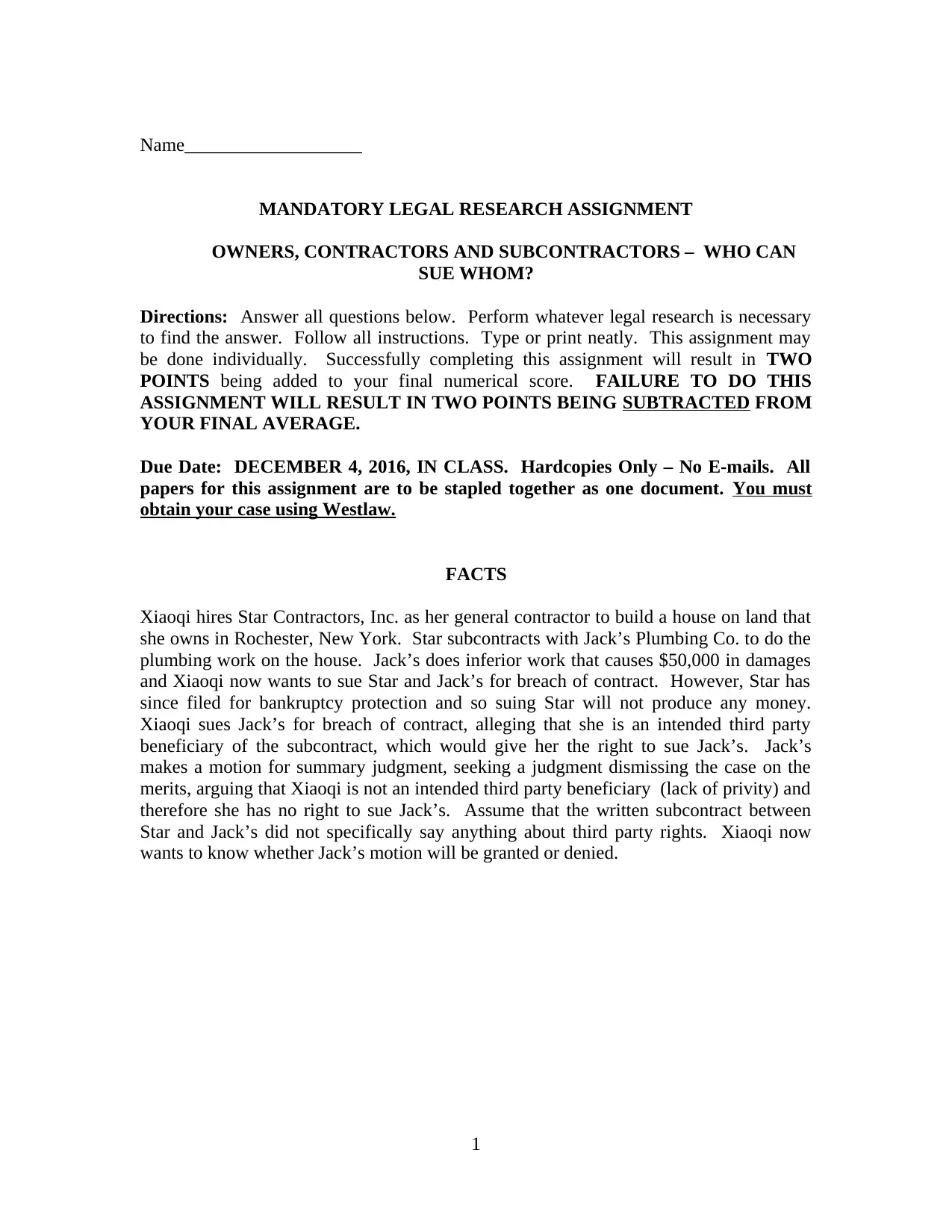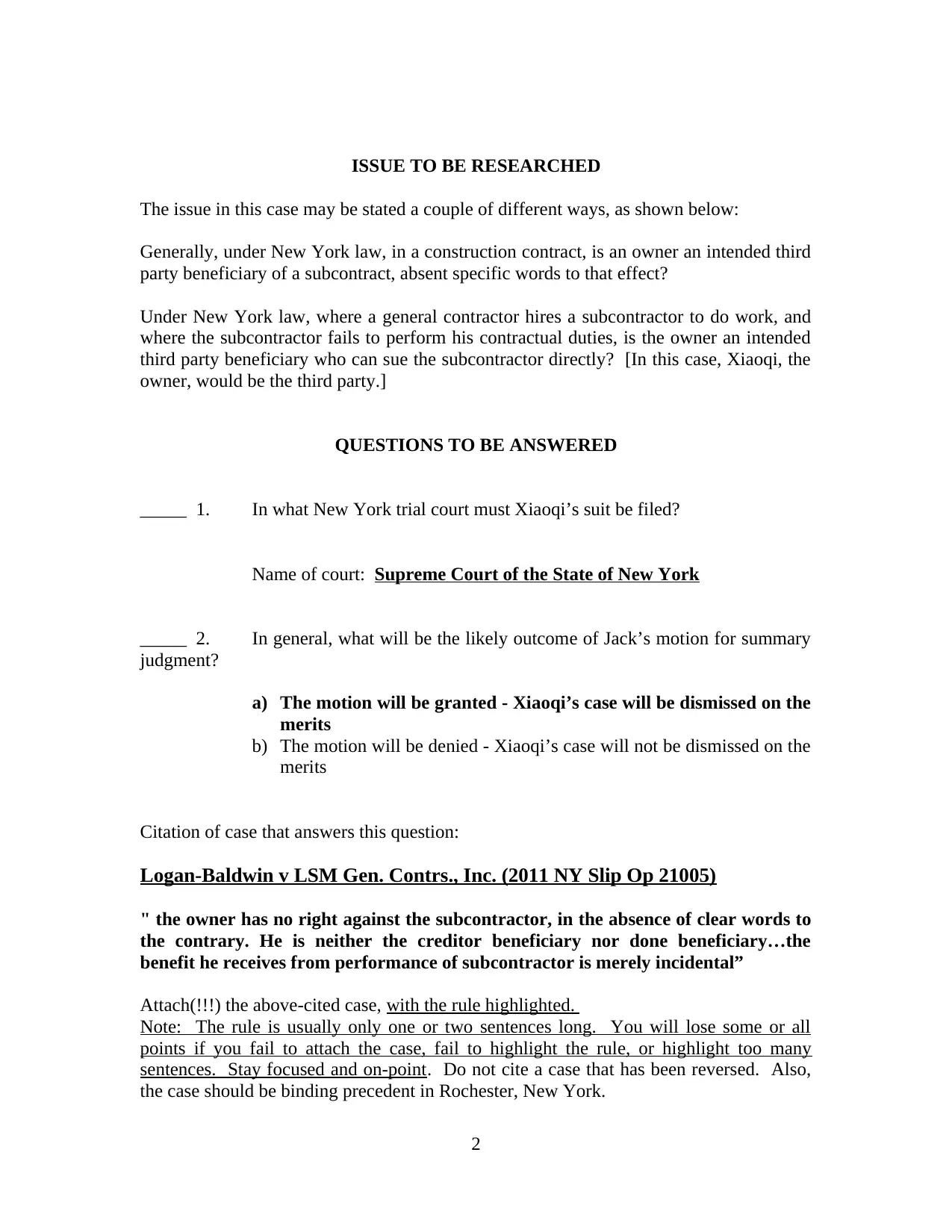Legal Research Assignment: Owners, Contractors, and Subcontractors Law
VerifiedAdded on 2019/09/13
|3
|711
|245
Homework Assignment
AI Summary
This legal research assignment focuses on a construction contract dispute in New York. The scenario involves an owner (Xiaoqi) who hired a general contractor (Star Contractors, Inc.) to build a house. Star subcontracted with Jack's Plumbing Co., whose inferior work caused damages. Due to Star's bankruptcy, Xiaoqi sues Jack's for breach of contract, claiming to be an intended third-party beneficiary of the subcontract. The assignment requires determining the likely outcome of Jack's motion for summary judgment, researching relevant New York law, and citing a case that answers the central question: whether an owner is an intended third-party beneficiary of a subcontract absent specific words to that effect. The solution includes the name of the appropriate New York trial court (Supreme Court of the State of New York) and a case citation (Logan-Baldwin v LSM Gen. Contrs., Inc.), with the relevant rule highlighted. The assignment emphasizes the importance of providing the correct case, highlighting the specific rule, and attaching the case to receive full credit.
1 out of 3






![[object Object]](/_next/static/media/star-bottom.7253800d.svg)